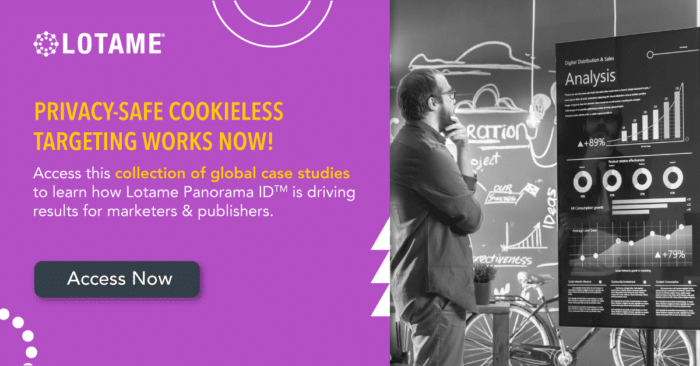If you’re looking into data solutions, you’re probably thinking about how they can improve your ad sales. While data does help there, it also offers a much broader reach. Data influences revenue through more than just advertising — it can help develop multiple streams of income for publishers that boost their bottom line. Let’s take a look at some of the ways publishers can increase revenue streams.
New Revenue Streams for Publishers | Why Multiple Streams Matter
Most publishers these days are trying to find additional sources of revenue. Their traditional streams of income, like digital displays and advertising revenue streams, are still crucial, but exploring other options can bring in alternative income for publishers. The Reuters Institute for Journalism found most publishers pursue multiple revenue streams with an average of six different types. In the publishing industry, relying on one source of income can be much more problematic than it was in the past. Some modern problems with this approach include the following.
- The decline of print: It’s no surprise that traditional print media has been struggling, and publishers are well aware of it. One PwC Global report estimates newspaper and consumer magazine sales will see drops in revenue of over 2% each year until 2023. Alternative income for publishers may be vital to the continuation of their operations.
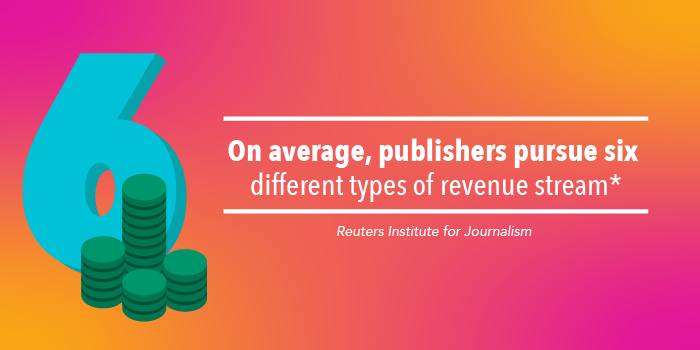
- Display ad outlook: Also from the Reuters study, 62% of industry personnel see display advertising as becoming less valuable over time, though 38% still say they find it “very important.” With an increasingly technological world, people have a harder time paying attention to digital ads. They may use ad blockers or ignore adjacent displays. Other forms of revenue might need to supplement traditional display ads.
- Audience connection and wasted ad spend: With modern data collection and ad targeting technologies, you can appeal to your audiences more directly. Sticking to old methods of display ads that don’t target your audiences accurately could be causing ad waste.
We share 7 ways of how publishers can increase revenue.
1. Maximize Ad Sales
For web publishers, the prototypical approach to using a data management platform (DMP) involves leveraging the data collected from your online presence and available second- or third-party data such as viewing behavior, interests, intent, affinities, a past purchase, and more. Many publishers use this information to add to their ongoing direct-sales package marketed to agencies and brands, increasing ad sales.
Whether the publisher offers audiences to the market through an ad server or SSP, the general approach is the same:
- Build a standard list of audiences bridging the major sectors in which your advertiser clients are members.
- Use bespoke setups for high-value advertisers, or for those that don’t fit into the standard set.
- Work with the client to determine a strategy suitable to the specific campaign — messaging, cross-screen, sequential, etc.
We offer more information on ad sales and a data management solution on our blog.
2. Monetize Your Data
As you collect more and more data about your audience, you gain the option to sell your data to the broader market.
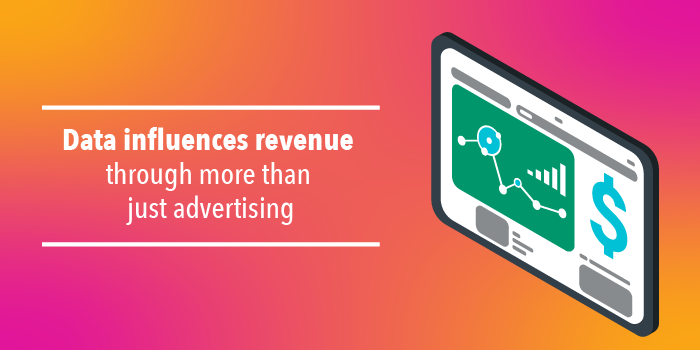
You can choose whether to sell via direct relationships with buyers or by making the data available to any buyer through a DSP data provider seat. Another option, if you want to avoid selling under your brand, is to look into joining an anonymized data exchange. All these options can help you earn new revenue streams of income passively using an asset you are already collecting with your DMP.
3. Affiliate Marketing
Speaking of passive income, affiliate marketing is another excellent way to bring in revenue on the side. This approach, based on revenue sharing, involves linking to valuable brands or products and earning a cut based on the customers that make a purchase. Business Insider pinned affiliate marketing at 15% of the digital media industry’s revenue.
To be a successful affiliate marketer, you need to ensure your content is authentic and high-quality. Consumers are getting better at picking out ads, and it tends to be a turnoff. It’s best to give them honest, real content and tell them up-front about the money-earning potential of affiliate links.
One benefit of affiliate marketing is its easy measurability. Since each conversion gets tracked and reported, you can more effectively review and report your campaigns or adjust them as needed.
4. Digital Subscriptions
Digital subscriptions can help you generate new revenue with the help of your most loyal readers. Consumers have an incredible amount of choice when it comes to what to read, so if you can convince them to commit to you through a paid subscription, you’ve both gained audience engagement and made some extra revenue. Plus, digital subscriptions take the emphasis away from page views, maintaining the integrity of your articles and keeping clickbait headlines at bay.
Many publishers opt for the metered approach, in which casual readers get to read a fixed number of articles a month before they need to subscribe. This approach helps convert your most engaged readers into paying customers without alienating casual readers with a hard paywall. It still allows them to “sample” your wares and read a few articles, even if they are highly unlikely ever to subscribe.
In the metered approach, you focus on getting payment from your most engaged readers, which is usually the top 5 to 10% of your audience. Likely subscribers tend to have the following characteristics.
- Reads five or more articles per month
- Reads multiple categories of content
- Accesses your content across various devices
- Lives in your market area and follows local news
- Subscribes to a newsletter or has provided an email
- Follows your brand on social media
One of the most significant components of someone’s likelihood to subscribe is their frequency reading local news. These people are five to 10 times more likely to sign up, as opposed to people who read national news and wire-sourced content. Including plenty of local content may generate more subscriptions, sometimes up to 10 times as many. People like to see the value of your brand and its relevance to their needs.
5. Prioritize Audience Segmentation
As a publisher, it makes sense to focus on working with advertisers that align with your brand. If you run a cooking website, you likely target food advertisers. For a real estate publisher, it’s home improvement companies, and a tech site goes for major consumer electronics brands.
But in today’s competitive environment, growing revenue requires new audiences that can expand your advertising client base. To do this, you’ll need to perform audience segmentation, or the process of dividing your audience into subgroups based on characteristics like interests, location, behavior, and preferences. The number of segments you create can vary widely. If you have a sports section, you can segment your readers there and target them with sports-related ads. If a substantial portion of your readers come from a specific geographic location, you may want to advertise events or businesses in the area. Segmentation can provide your readers with a personalized experience and helps you sell ads more effectively.
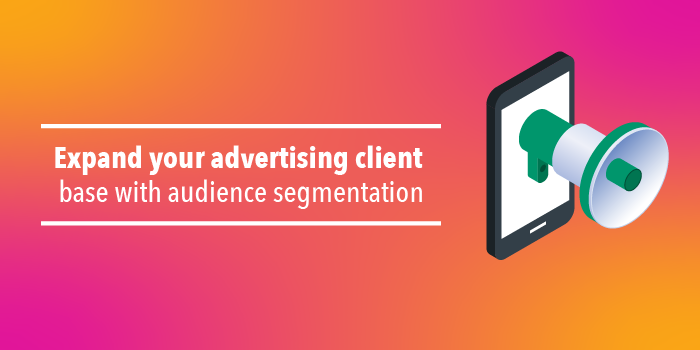
To take on audience segmentation, you’ll need the right tools. Semantic classification is one that identifies the concepts and context of your existing content. The Semantic Classification tool within the Lotame DMP can help you understand audience interests on a more granular level than typical contextual analysis. By combining that information with additional first- and third-party data, you can find new audience segments that appeal to a broader range of advertisers.
One substantial benefit of audience segmentation is that it plays into the Pareto Principle, which states that 80% of business profits come from 20% of the consumers. This principle emphasizes nurturing individual relationships with every customer. By segmenting your audience, you can create stronger connections and personal relationships with prospective clients. Between more efficient ad targeting and personalized content, audience segmentation can help improve your relationship with customers and increase your chance of conversions.
6. Discover New Audiences
Once you’ve got a feel for your current audience, you can start to find new ones you can offer to advertisers. Identifying your target audience is a necessary first step. You’ll have to consider your relationship with potential new clients — what will they want, and what will you have to offer? Thankfully, since you’ve already studied your existing customers, you have a pretty good starting point.
One way to reach new audiences is to use audience extension, which allows your advertisers to reach their audience after they’ve left your website. You can track your readers and offer the resulting data to advertisers, who will then use it to deliver ads on other websites. Audience extension tactics like this allow for narrower audience targeting and can snag you more advertising clients.
A semantic language processing tool offers specific information about what engages your audience. This information is useful for both the editorial and revenue-generation perspectives.
A personal finance publisher, for instance, might use the semantic classification tool and find that articles mentioning “best travel and reward credit cards” generated the most reader engagement. By pulling that data into a DMP and layering it with your own data and other high-quality data like demographics and purchase history, the publisher may find that a significant proportion of the engaged audience is female, aged 24 to 54 and they also frequent luxury hotels and high-end clothing sites. With this new information, sales and ad ops teams can create two new audience segments that target advertisers outside your niche: boutique hotel chains and luxury handbag companies. Since this new audience is valuable in that they are more likely to convert on the targeted ads, their cost per mille/thousand can be higher, contributing to more valuable and diverse revenue streams.
7. Create Customized, Personalized and Recommended Content
You can apply the customer insights gained from the DMP to your website, adjusting content in several ways.
- Content customization: If you know a portion of your audience is interested in specific content, you can start to market toward them. You may find that most of the people who watched your videos recently are young males interested in sports. Knowing this tells the production team they can appeal to this audience by making more sports videos. When content is relevant to the individual, it keeps them engaged and more likely to be loyal customers.
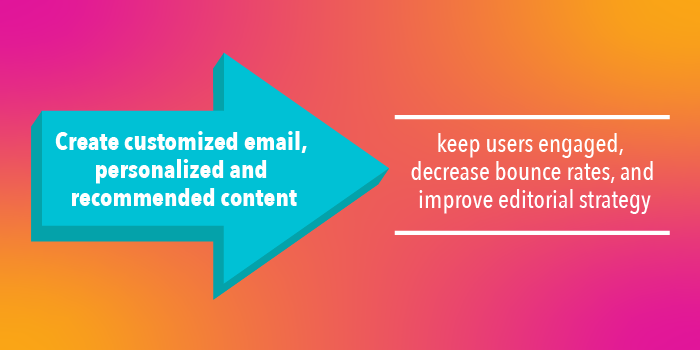
- Content personalization: While the production team can create content for specific categories, you’ll also need to make sure it is reaching the people to whom it would be most relevant, people you know are interested in it. With the help of a content management system, DMP audiences can feed only the most relevant articles to users. Say, for example, a DMP has a user marked for interest in finance. When the user visits the site, they see a finance article on the homepage. If the user is a member of both finance and sports audiences, the DMP will look at their frequency and recency, offering up the one they visit more often.
- Content recommendation: So we’ve ensured that our users are getting the right articles, but we have to keep things fresh, as well. We can’t keep showing them the same material or type of article. Content recommendation can help. As a user browses through a page, they may see a selection of suggested, relevant articles on one side or at the bottom. At this point, you can reach out to those users who may belong to multiple audiences. Take our sports and finance fans, for instance. With content recommendation, you can suggest a finance article for them underneath the sports one, as well as any other audiences they are part of. This process works through integrating the DMP with a content recommendation engine.
While none of these methods will perfect your audience and content customization, they can help keep users engaged, decrease bounce rates and improve your editorial strategy.
Use Data to Drive Growth in Consumer Marketing
Data is one of the most valuable tools in a marketer’s repertoire and for a good reason. Analytics allow you to find insights into your customers’ purchase patterns and behavior, so you can better adjust your tactics or target similar audiences. Data analytics can help you improve decision-making, marketing, customer service, and operations.
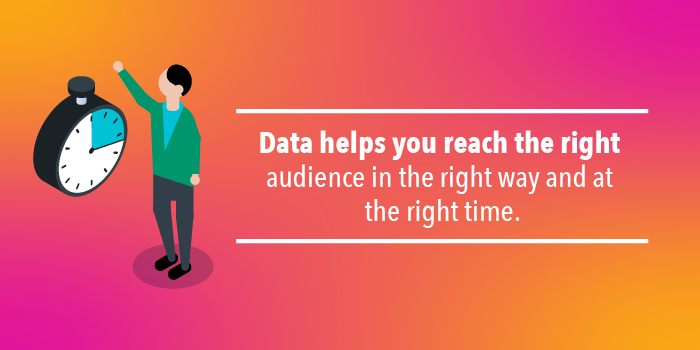
If a publisher’s consumer marketing team wants people to download their app or listen to a podcast, they can use data to target the right people. If their podcast is about entertainment, they might target people who frequent their entertainment vertical. If their app is about finance, they could similarly target people who read mostly finance articles. Targeting the right people can help push their growth goals.
Data is all about reaching the right audience in the right way and at the right time. Using it appropriately is critical to growth in consumer marketing.
Reap Maximum Revenue as a Publisher
Publishers need to have a variety of income streams to keep up with the changing landscape of the industry. Leveraging the data they gain from their customers can yield a wide range of revenue streams. Whether you want to sell more ads, start marketing with affiliates, create custom content or any of the above methods, Lotame tools can help you get the data you need. With our robust data and data technology solutions, you can measure and track your audience, finding ways to add multiple streams of income to your bottom line.
Want to learn how publishers are seeing an 8X lift in overall yield? Access this collection of global case studies to see how Lotame Panorama ID is driving results for marketers and publishers around the world.
